CONSERVATION CORNER
A weekly blog for all things conservation
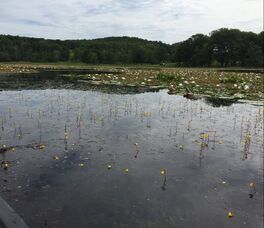 By: Tess Flynn-Belles, Natural Resource Specialist During the growing season, the Conservation District can anticipate receiving several calls from landowners who own ponds asking how to control and treat aquatic plants. There are many options to consider, but the first question that needs to be addressed is, “What plant species are you trying to treat?”. The method of treatment will vary on what plant species you are targeting. In this article, we will briefly discuss the three basic methods of treatment (biological, chemical and physical) and some pros and cons of each.
0 Comments
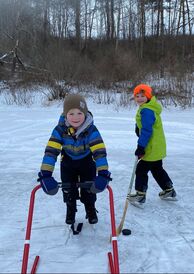 By: Tess Flynn-Belles, Natural Resource Specialist, Bradford County Conservation District Psst… hey you… yeah, you. The one wrapped up on the couch in that new blanket you got for Christmas from Grandma Tilly. It’s me, the pond out back. I know it’s cold out here, believe me! Have you looked at me lately? I have a giant sheet of ice and snow covering me. I KNOW cold! That doesn’t mean that I still don’t have a lot going on underneath it all. I’ve still got plants that are photosynthesizing, and fish are still swimming around doing their thing. There are also a lot of fun activities that you can use me for in the winter as well. Maybe you could layer up and come out and visit me for a little while? You’d be helping me and my friends out big time. 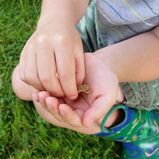 By: Jonathan VanNoy, Natural Resource Specialist What do you consider to be the “official sign” that spring has arrived? During daylight hours, many observe the first Robin of the year to be the sign that spring has sprung, or at least that winter’s grasp is weakening. Other examples are the emergence of flowers such as Snowdrops, Crocus, or Daffodils. However, one of the most prominent (and my personal favorite) sign of spring is the cheery chorus of the Northern Spring Peeper!  By: Tess Flynn-Belles, Natural Resource Specialist, Bradford County Conservation District This past year has provided a lot of us with plenty of time to reflect on our properties and home and come up with new ways to freshen the place up. With the amount of calls that the Conservation District received about new pond construction last year, it must have been high on some of your lists! So, with that, we thought we would provide some things to consider before you start. 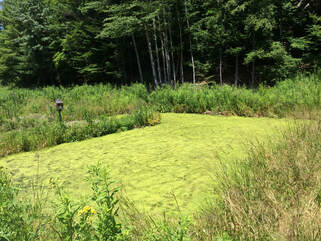 By: Jonathan VanNoy, Natural Resource Specialist If I were to tell you to close your eyes and describe what comes to mind when you hear the word “wetland”, what would you describe? A stagnant, slimy waterbody? A grassy, soupy area with cattails? Maybe that lower field that you can only make hay on every few years? How about that special place that you love to hunt ducks, or trap muskrats? You may have an archery stand on the edge of a swamp that comes to mind. You might describe that spot in your woods that pools water each spring, and for one or two warm nights a year is just crawling with toads or salamanders as they congregate to lay masses of eggs. (Go to a local vernal pool, pond, swamp or wetland on a warm, spring evening and pull up a chair and just listen and watch. There is NOTHING that can compare to the sound you will hear if the frogs or toads have congregated!) 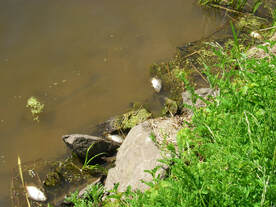 By Tess Flynn-Belles, Natural Resource Specialist Imagine this; it’s an early spring morning, the sun is shining and most of the snow has melted. You decide to take a walk down to your pond and see if the ice has melted off. You’re enjoying your walk, the warm sun softening the crisp of the morning air. As you approach your pond, you take in the light sparkling off the water. YAY!! The ice is off, time to start casting a line out and see what you catch. You’re cruising the edge of your pond when you notice a dead sunfish…. A little more walking… a dead largemouth bass. You look up and notice that the shoreline of your pond is littered with dead fish!! It’s then that it hits you in the gut…… FISH KILL!!!
By: Brad Cummings, Conservation Technician, Bradford County Conservation District
A pond can be an excellent addition to your property, offering many hours of fun and enjoyment for your family, friends and future generations, but it would be wise to do a little homework before committing the often significant financial investment for construction. An essential part of this “homework assignment” should be to contact one of our friendly District staff and request a site inspection to assess what level of permitting your project may or may not require. We hope the following brief guide to new and existing pond permitting will be helpful. |
AuthorsVarious staff at the Bradford County Conservation District Archives
April 2024
Categories
All
|
